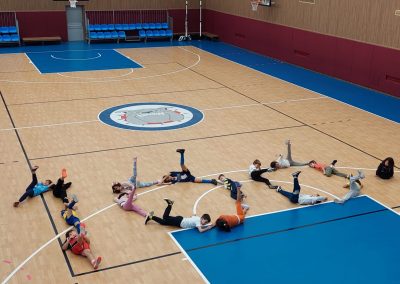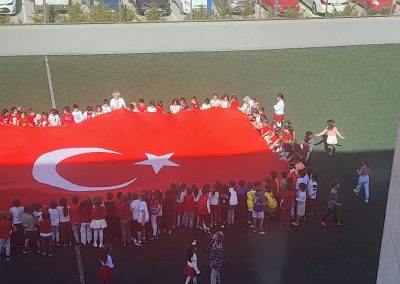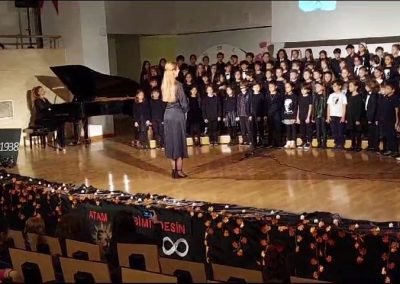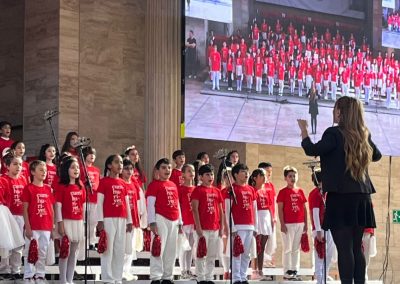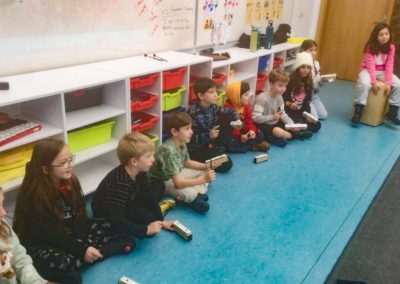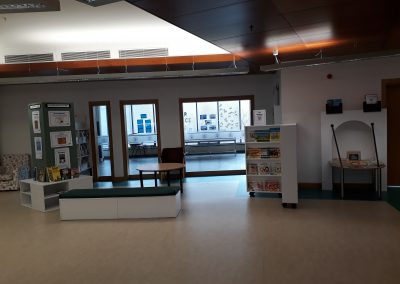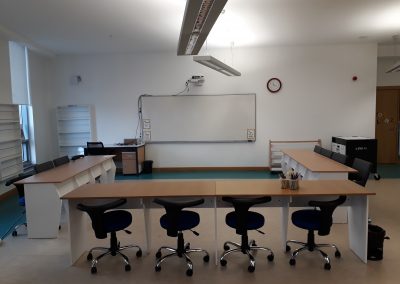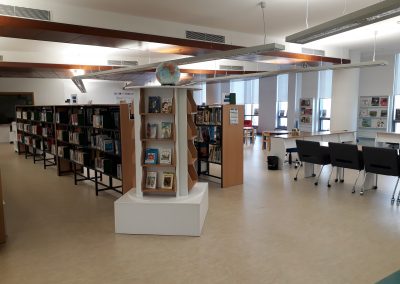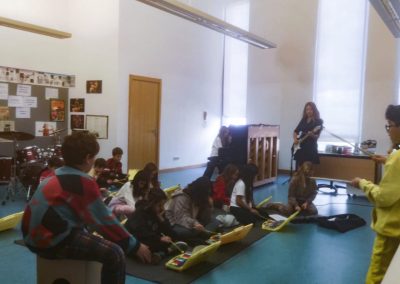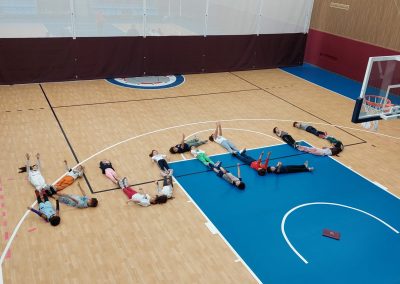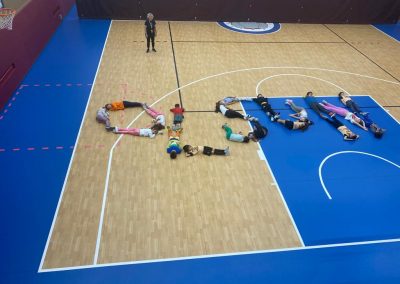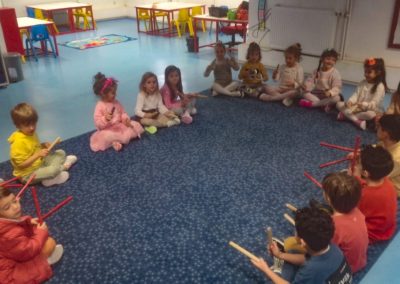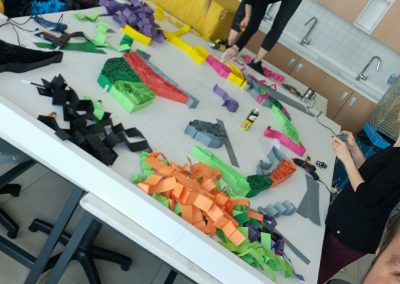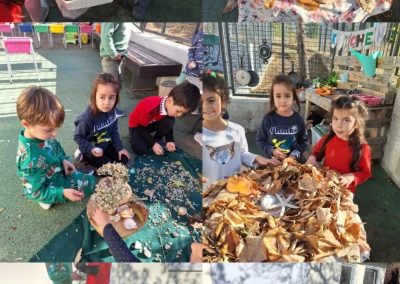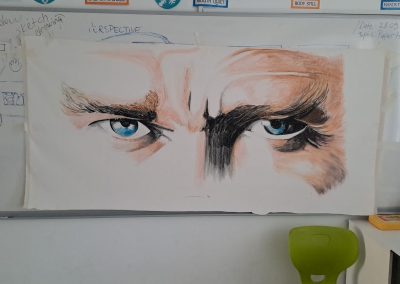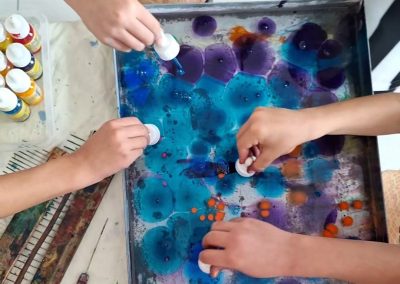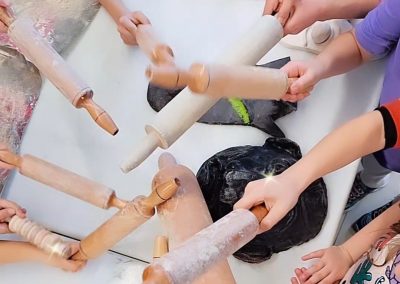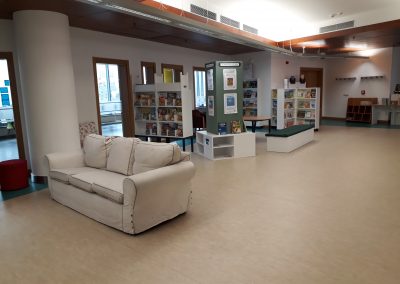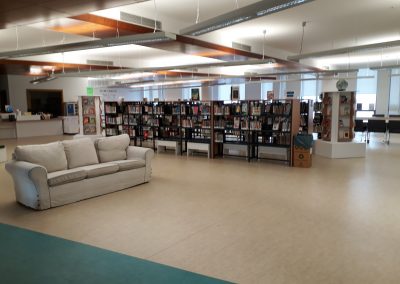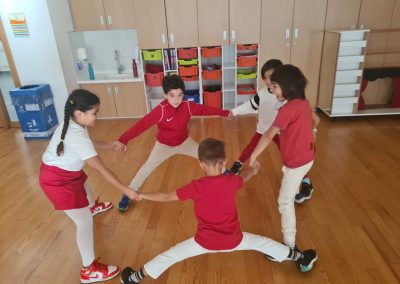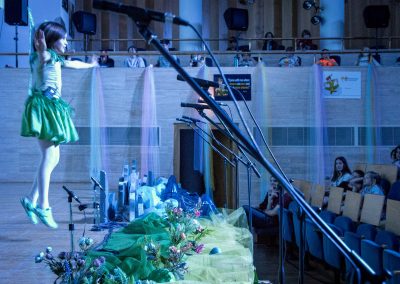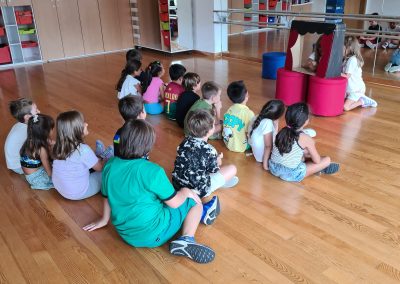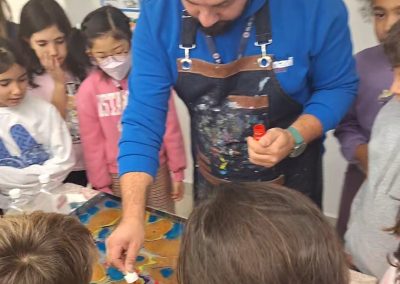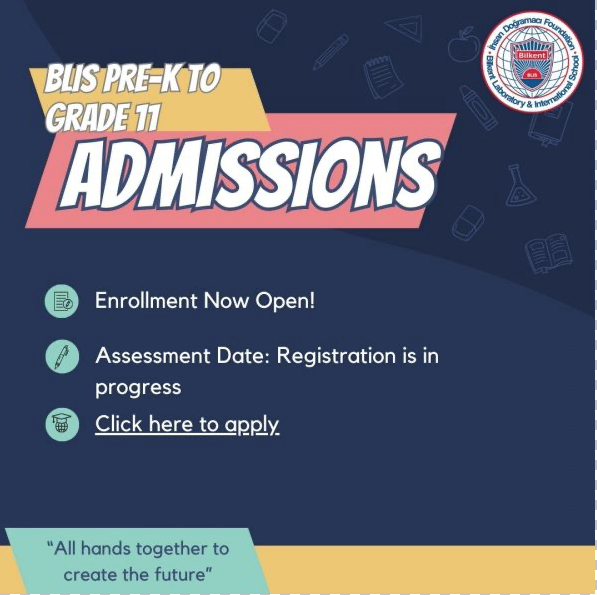ES Specialists
Keywords:
Creativity, communication, problem-solving, performance, improvisation, theatre, pantomime, imagination, expression
Drama Program Mission Statement: To promote drama as a core discipline that develops transdisciplinary and lifelong skills of creativity, inquiry, communication, collaboration and community.
The IB Learner Profile frames early experiences in the arts at BLIS and remains a foundation for classroom experience throughout our PK-12 drama education.
Pre K-4 Primary Drama
Drama is an integrative process that develops imaginative thought and creative expression in children. Through the use of movement, pantomime, improvisation, story dramatization, and group discussion, children acquire language and communication skills, social awareness, problem-solving abilities, self-concept enhancement, and an understanding of theatre.
With the Elementary drama experience, students are supported in an environment where they feel comfortable working creatively and practicing to think critically.
At BLIS students view their own performances and their friends’ performances through acting, sketches, and improvisations in class. Through these experiences with drama, students develop their imagination and confidence
ES ICT
Keywords:
Information, Communication, Technology, Online Safety, Digital Citizenship, Hardware, Software, G-Suite, Coding, Typing, Poster Design, Video Design, Presentation, Algorithmic Thinking, Educational Games, Scratch, Programming
Information & Communications Technology (ICT) lessons at BLIS are based on IB’s PYP (Primary Year Programme). The ICT Teacher works collaboratively with other ES teachers and applies relevant PYP Unit topics to the ICT lesson. The first aim of ICT Classes is to teach students how to use technological devices and the internet safely to protect themselves from negative effects of technology. For this purpose, integrating ‘Digital Citizenship’ to the ICT curriculum plays a significant role.
The curriculum also covers computer hardware and software skills starting from computer basics, 10 finger typing to coding. Game-based learning, which makes it fun, helps students learn more easily. In the early primary years, students learn to use the mouse and keyboard with many educational games. All students use Google applications such as creating documents, making presentations, making calculations of data using Google Sheets and following lessons’ documentations from Google Classroom, as well as using our email system for official communication.
Within the framework of PYP, ICT provides opportunities to learn how to research by using technology. Students learn the importance of research techniques and apply them to gather valid information from reliable sources, such as using well-known electronic dictionaries like Britannica and other safe websites. Not only do these lessons help students improve their research skills, but they also provide opportunities to learn how to effectively present their findings with software tools (presentations, posters, videos, etc).
Another purpose of the ICT curriculum is developing 21st century algorithmic thinking and coding skills of students. Algorithmic thinking is the ability to analyze and solve problems at a level of abstraction that is beyond that of any particular programming language. For that purpose, each grade level from 1 to 4 learn block-based coding and develop their coding skills using some online tools. Throughout Elementary School, students design their own games and experience the joy of creating games, not just playing them.
ES Music
Keywords: Creativity, harmony, performance, expression, collaboration, movement, holistic, imagination, universal, singing, togetherness, body-percussion, instruments
Music holds an important and traditional place in our school’s curriculum. From Pre-Kindergarten through to Grade 12, students participate in a broad range of musical activities which include five strands: performing:singing and playing instruments, creating and composing, notation, listening and appreciation and music in society. Each strand is addressed separately, but in practice, they are interrelated elements. Through music, students can develop their creative skills and aesthetic appreciation.
The musical journey begins in the early years of elementary school at the Pre-Kindergarten and Kindergarten level and continues all throughout the elementary years until Grade 5. All classes receive music instruction each week by a specialist music teacher.
Throughout the early years, which includes Pre-Kindergarten and Kindergarten, students begin to make choices about sound, using body percussion, voices and rhythm instruments. They participate in a variety of songs from their own and from different cultures. Students begin to read non-traditional notation as well as basic traditional notation. They participate in integrated arts performances, which combine all areas of the arts, including music, visual arts and drama.
In the first, second and third grades, students gain an awareness and appreciation of music from a variety of times, places and cultures. Through singing songs and playing instruments, students develop the ability to perform accurately and confidently, making expressive use of musical elements. Students are exposed to songs in English and in Turkish, as well as songs from other cultures, in order for them to develop an appreciation of music from around the world. Students also have opportunities to play and compose music using Orff instruments. Once in Grade Three, students are introduced to the soprano recorder and learn to read traditional notation and to compose simple melodies using the recorder. Students in all primary grades take part in annual concerts and integrated arts performances.
In the fourth and fifth grades, students develop musical ideas in composition using musical notation. They gain an awareness and appreciation of music in all its forms from a variety of times, places and cultures. Students sing songs in both English and in Turkish, performing them with sensitivity and with accuracy. They create their own music and perform it for others using a variety of instruments.
In Grade Four, students continue to develop their recorder and Orff skills, including playing, reading notation and composition skills. These skills will prepare them for their participation in the Grade Five band program the following year. Grade Four students participate in a yearly integrated arts performance as well as concerts to celebrate special days and occasions.
The students at BLIS receive a thorough and rewarding musical education, one that will serve them well in future years and give them solid foundation in the Performing Arts.
ES Art
Keywords:The visual art terms separate into the elements and principles of art. The elements of art are color, form, line, shape, space, and texture. The principles of art are scale, proportion, unity, variety, rhythm, mass, shape, space, balance, volume, perspective, and depth.
Fine Arts are integrated into the curriculum and explored in complement with the ideas and investigations from the PYP units of inquiry across all grades in elementary.
Students engage in inquiry about art beliefs and values. What is Art? What is beauty? Why do people create? What counts as good? Through gallery walks, exhibitions and guest artists, students are exposed to many potential answers and are asked to evaluate these responses with criteria they have developed.
Students at each grade level are given the opportunity to develop their technical ability through a variety of two and three-dimensional media. Children are encouraged to use materials and techniques to express ideas and feelings and, most importantly, to be inventive and creative, finding ways to achieve their goals as they achieve their individual goals.
Various techniques and media from both Turkish culture and foreign cultures are explored such as Ebru/ marbling, ceramics, or Chinese ink painting. In keeping with our Eco School philosophy students also use recyclables for sculpture and design posters and t-shirts promoting sustainability and environmental awareness.
Exhibitions and presentations happen in and out of class throughout the year. Our annual Festival of the Arts in April exhibits artwork created throughout the year by all BLIS students, from our youngest students to our oldest.
ES Physical Education
BLIS PHYSICAL EDUCATION DEPARTMENT MISSION STATEMENT
Keywords: Healthy lifestyle, movement, physical fitness, team sports, exercise, gross motor development, coordination, sportsmanship, fundamental movement skills, play-based learning, active lifestyle, mind-body connection, body awareness, active play, balance exercises.
Physical activity and a healthy lifestyle are of great importance for everyone, regardless of age, development and ability. For school children, they are of even greater importance, and have a significant impact on their physical, mental and social development. Any school which advocates that it is concerned with the ‘complete’ education of its’ students must therefore have a comprehensive and well-implemented Physical Education program.
All students will leave our school having experienced a diverse range of physical activities and learning styles. They will be competent performers in a range of individual, group and team activities and possess the relevant language skills for these activities. They will also understand the rules and etiquette of these activities in order to be able to participate effectively throughout their lives, modeling good sporting behavior. Each student will realize the importance of health and fitness as a life skill and be able to design and implement a body maintenance program. At the end of Grade 10 they will leave our program with an interest, capability and desire to continue being physically active throughout their lives.
The old adage ‘healthy body, healthy mind’ is now accepted by all, for besides the obvious benefits of exercise for good all-round physical development and health, it is acknowledged that exercise and physical activities also complement mental exertion and benefit intellectual development, and can help promote and nurture positive character and personality traits that are often not touched on in classroom situations.
AIMS
- To provide students with a broad and balanced range of physical and sporting activities in lessons.
- To promote an interest in physical and sporting activities, developing the aptitudes and abilities of each student, which will lead to participation and involvement in physical activities out of school and in later life.
- To develop the physical abilities and aptitudes, cardio-vascular fitness, flexibility and strength of each student through active participation in a full range of activities.
- To teach an understanding of the human body, how it works and how it is affected by exercise and lifestyle, the importance of physical fitness and healthy living, and to give each student the knowledge to be able to live a healthy lifestyle.
- To promote a basic understanding of the rules and regulations of each activity, and to nurture the principles of fair play, honesty and responsibility.
- To teach the importance of safe practices in all sporting activities, and to develop safety awareness.
- To increase self-awareness and to encourage a positive self-image and develop a positive and caring personal moral code and value system.
- To foster social development and the ability of students to co-operate: to help, encourage and learn from each other; to develop positive relationships, understanding that each individual is different and has unique qualities.
- To encourage independent and interdependent critical and creative thinking and to improve problem-solving skills, so developing the ability to make informed and reasoned decisions based on acquired knowledge.
- To provide all students with equal opportunities, yet to enable elite performers to have the opportunity for further development.
Physical Education Clothing Policy
For safety reasons, it is important that students are dressed appropriately for all physical education classes. Students will not be permitted to participate in physical education classes if they are not dressed appropriately. Appropriate dress for PE classes includes:
- Sport shoes and socks
- Sport shorts (or warm long sport pants for colder weather)
- Sport t-shirt (and warm long-sleeved sweatshirt for colder weather)
- No jewelry (earings, rings, toerings, necklaces, bracelets, bangles, watches, etc.) or other items that can cause injury or accidents
- Long hair needs to be pulled back and secured tightly
Our students, parents and staff members represent different cultural expectations with regards to PE classes and hygiene. In particular, there are many different traditions about changing clothes before and after PE classes. We recognize that changing of PE clothes during school time impacts learning time. Therefore, on days when a student has PE classes, they are asked to come to school dressed in their sports clothes. This saves valuable learning time. After PE classes, if it is necessary for students to change clothes for hygiene reasons, this will be permitted.
ELEMENTARY
The PE expectations in the Primary Years Program (PYP) are arranged into seven strands: body control and spatial awareness, adventure challenge, athletics, movement to music, games, gymnastics and health-related activities. Through PE, students are learning the “language” of physical movement, and explore the skills associated with the different strands of PE. They learn to understand what they can and cannot do physically and become aware of their own strengths and weaknesses in this discipline. Physical activity is an essential aspect of a well-balanced, healthy lifestyle and learning through PE helps to build self-esteem, confidence, cooperation and fitness.
ES Library
Keywords: Library, reading, book, source, research, fiction, non-fiction, inquiry, information, knowledge, collection, resource, materials, magazines, search, cataloging.
The BLIS Elementary Library provides a wide variety of books for students to borrow for reading practice, information, and enjoyment. The collection includes picture books, fiction, non-fiction, biographies, mother tongue, and reference books. The Library aims to support PYP units of inquiry, classroom work, and the curriculum.
All grades are scheduled to come to the library every two weeks for a 40-minute session. Students are expected to learn and demonstrate acceptable library behavior, the basic rules and regulations in the library, and responsibility for library books. During the library classes, students check out books according to their interests, enjoy literature through activities such as storytelling, and learn how to become effective library users The number of books a child can check out is determined by their grade and level of responsibility.
Students must return all overdue books before checking out other books. A fee must be paid for the replacement of any lost or damaged books. Students are responsible for handling library books with care since they are for everyone to share.


